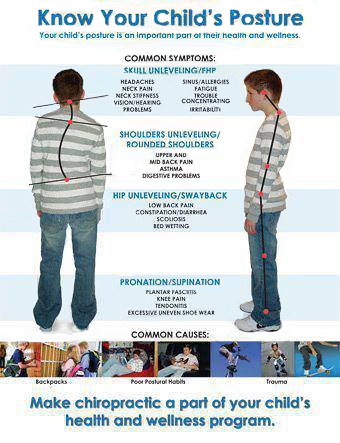Chiropractic in Greater Asia
 The practice of chiropractic has been present in Asia for several decades and steadily growing, but its legal standing and acceptance vary greatly among different countries. Chiropractic is a healthcare profession that focuses on the diagnosis, treatment, and prevention of neuromuscular disorders, particularly those related to the spine.
The practice of chiropractic has been present in Asia for several decades and steadily growing, but its legal standing and acceptance vary greatly among different countries. Chiropractic is a healthcare profession that focuses on the diagnosis, treatment, and prevention of neuromuscular disorders, particularly those related to the spine.
In Japan, chiropractic is officially recognized as a healthcare profession and is advancing its regulations by the government. Chiropractors in Japan are required to have a university degree and pass a national licensing examination before they can practice. They are also required to be members of the Japan Chiropractic Association (JCA). According to the JCA website, the association aims to improve the quality of chiropractic care and promote the safe and effective use of chiropractic in Japan.
In South Korea, chiropractic is also recognized as a legitimate healthcare profession but not yet regulated by the government. According to the Korean Chiropractic Association (KCA) website, chiropractors in South Korea are required to have a university degree in medicine and chiropractic. Membership in the KCA is not mandatory, but it is recommended. The KCA also states that the association aims to promote the safe and effective use of chiropractic in South Korea.
In China, the legal status of chiropractic is uncertain. According to the World Federation of Chiropractic (WFC), chiropractic is not officially recognized as a healthcare profession in China, and practitioners are not regulated by the government. This means that anyone can claim to be a chiropractor without having any formal education or training.
In Hong Kong, chiropractic was the first country to be formally recognized by the government and regulated by the Hong Kong Chiropractors Board (HKCB). According to the HKCB website, chiropractors in Hong Kong are required to have a university degree, pass a national licensing examination, and register with the HKCB. However, despite the recognition of chiropractic by the government, it is still not considered a mainstream healthcare profession in Hong Kong.
In Singapore, chiropractic is officially recognized as a healthcare profession under commonwealth law and regulated by the government. Chiropractors in Singapore are required to have a university degree in Chiropractic and pass a national licensing examination in the country of graduation before they can practice. Additionally, they must also be members of the Singapore Chiropractic Association (SCA) to have the best protection. This allows for a regulated and safe practice of chiropractic in Singapore, and it is a well-respected and accepted form of healthcare.
In Thailand, the Ministry of Public Health has acknowledged the presence of chiropractic. According to the Thai Chiropractors Association (TCA), the Ministry of Public Health has recognized chiropractic as a healthcare profession and has set guidelines for the practice of chiropractic in Thailand. This allows for a regulated and safe practice of chiropractic in Thailand, and it is considered a well-respected and accepted form of healthcare.
In Malaysia, chiropractic is also recognized as a legitimate healthcare profession and regulated by the government. Chiropractors in Malaysia are required to have a university degree and pass a national licensing examination. IMU graduates Malaysian chiropractors just outside of Kuala Lumpur. This allows for a regulated and safe practice of chiropractic in Malaysia, and it is a well-respected and accepted form of healthcare.
In the Philippines, there is a law called the Traditional and Alternative Medicine Act (TAMA), which recognizes chiropractic as a legitimate healthcare profession and certifies its practitioners holding foreign diplomas in accredited colleges. According to TAMA, chiropractors in the Philippines are required to have a university degree, pass a national licensing examination, and register their foreign diploma and foreign license with the Philippine Institute of Traditional Health Care (PITAHC). This allows for a regulated and safe practice of chiropractic in the Philippines, and it is considered a well-respected and accepted form of healthcare.

Chiropractic’s Founder’s Day is September 18th
In India, the legal status of chiropractic is only permitted under Commonwealth law. While very few chiropractors are practicing in the country, there is no specific law or regulation that governs the practice of chiropractic. However, the Indian government has acknowledged the presence of chiropractic and the Chiropractic Diplomatic Corps has been working to establish guidelines for university education and the practice standards in partnership with Chiropractic India, an Indian NGO. According to the Indian Association of Chiropractic Doctors (IADC), the Indian government has yet to formally recognize chiropractic as a healthcare profession. As in other Asian nations without formal government regulations, this means that anyone can claim to be a chiropractor without having any formal education or training, placing the public at risk of the unqualified practice of chiropractic, mostly by Physical Therapists who are not trained to be primary-care doctors like the Doctors of Chiropractic.
It is worth noting that the information above may vary depending on the source, and it is always best to consult the respective government websites, regulatory bodies, or professional associations for the most accurate and up-to-date information.
Professionally yours.
docMIKE

 Follow
Follow

No Comments